Kubota Garden
A beautiful garden with an amazing history

I first heard of Kubota Gardens, located in southeast Seattle, many years ago when I attended a panel discussion at the University of Washington on the influence of Japanese garden design in the Pacific Northwest. In that discussion, Fujitaro Kubota’s name was brought up often, and it was always with deference, respect, and honor. And well deserved that respect is. Mr. Kubota’s influence on Pacific Northwest garden design can easily be compared to the influence Frederick Law Olmstead had on American landscape architecture as a whole. Combining native Northwest plants with traditional Japanese garden design, the garden is the life’s work of Mr. Kubota.
But first, I would be remiss to speak only of the garden and not tell you a little about the history of Mr. Fujitaro Kubota himself.

Born in Kochi Prefecture on the island of Shikoku, Japan in 1897, Fujitaro immigrated to
Hawaii in 1907 and eventually moved to Seattle where, after some years, he became a professional gardener and in 1923 founded the Kubota Gardening Company. Although he was not formally trained, he did return to Japan three times to study. However, he also knew a man in Seattle by the name of Ryotaro Nishikawa, who, in Fujitaro’s own words, “… was my only gardening teacher,
and no one else”.
This was an exceedingly difficult time for those of Japanese ancestry to live and work in America as feelings against non-citizens, especially those from Asian countries, ran high. Laws prohibited non-citizens from owning or leasing property and Japanese peoples were also not permitted to become citizens. However, in 1927, with the help of a friend who lent his name to the transaction to get around the discriminatory ownership laws, Kubota purchased 5 acres of logged-off swamp in Rainier Beach. He was eventually able to reach his goal of 20 acres by acquiring the lots adjacent to his own. His vision was to build gardens to show prospective clients what he could do for them as a gardener.
Sadly, on March 21, 1942, following the war with Japan, all persons of Japanese ancestry were ordered to evacuate the West Coast, and the Kubotas were imprisoned at the Minidoka internment camp in Idaho. However, even there Kubota continued to garden, and he planted shade trees and gardens to help improve life there. Allowed to return home in 1945, Kubota began again. Old customers came back, including Seattle University. When laws changed in 1952, Fujitaro Kubota became a US Citizen and in 1966, when Washington law changed, he was finally allowed to own his own garden.
This is just a fraction of the entirety of the history of Mr. Kubota and his life’s work as a gardener. I would highly recommend going to Kubota Garden’s website for the full history of this inspiring tale of hard work and unwavering vision.
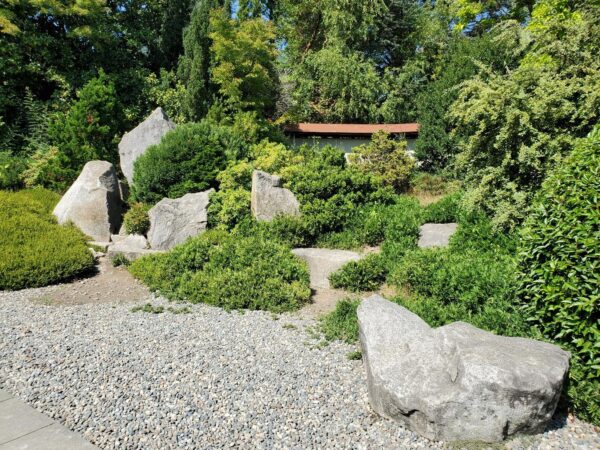
Entrance area just outside the main entrance.
Last September I finally had an opportunity to visit Kubota Garden along with my friend Carol. We had the great honor that Joy Okazaki, the President of Kubota Garden Foundation agreed to give us a personal tour of the beautiful 20-acre site. And beautiful it was! As it was late summer, the very first hints of fall color were coming to the garden. It was spectacularly beautiful, and I can only imagine what a feast of color would surround these gardens in Fall!
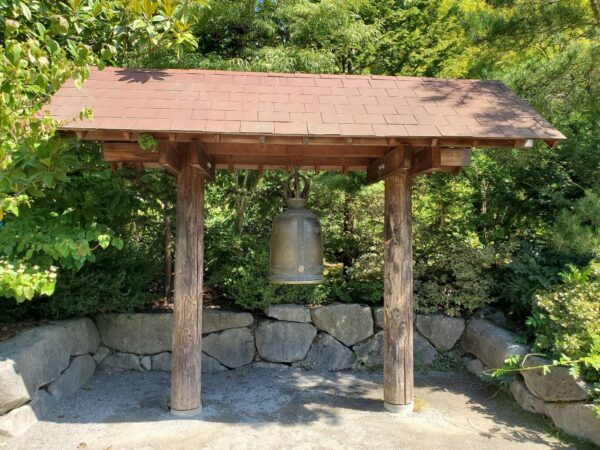
As you enter the garden, you are greeted by a traditional Japanese prayer bell. Pathways diverge from here to lead you into the main parts of the site. Water is everywhere! As water was one of the aspects of the site that initially intrigued Kubota; waterfalls, streams, and quiet ponds with rock pathways and wooden bridges entice you further and further along each path while allowing you to stop and take in what is before you as you go.

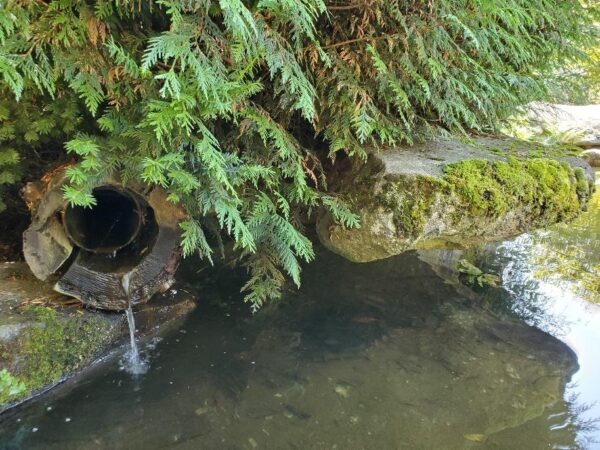
Kubota incorporated the running water in many different ways.
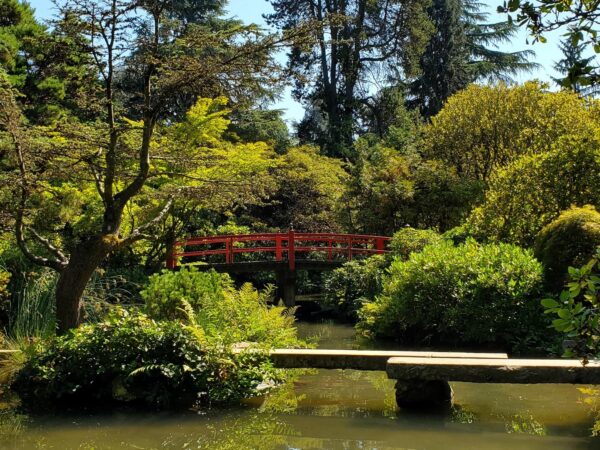
Two of the many bridges are found in the park.
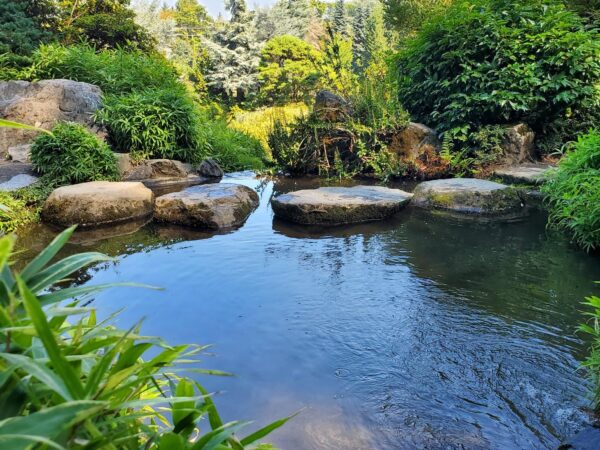
A stone pathway leading over the upper pond on the Mountainside overlooks the rest of the site below.
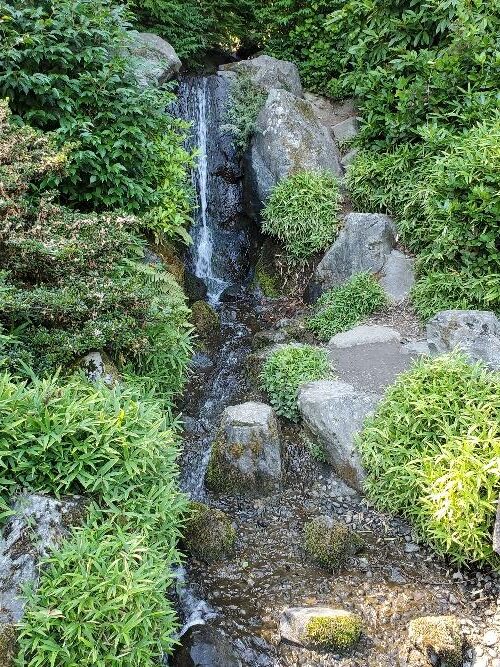
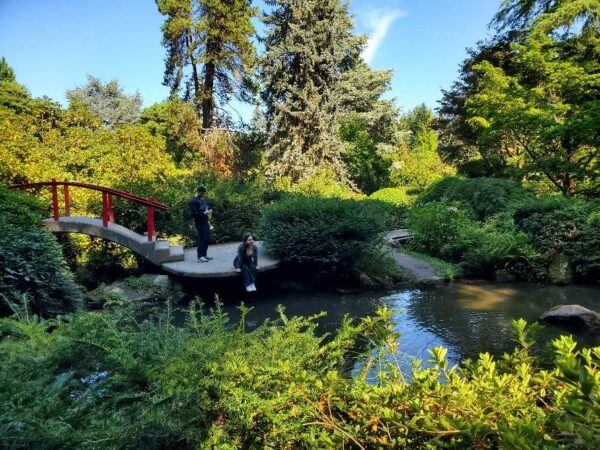
A waterfall spills down from the mountain and a viewing platform overlooks a quiet pond.
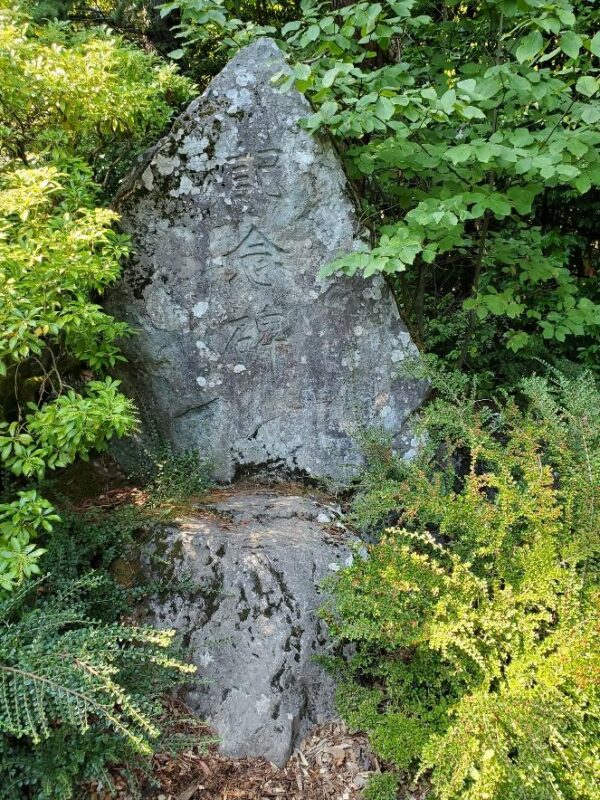
The placement of stone is another important element found in the garden. It should be noted that stones are a fundamental structural and symbolic element in Japanese gardens. They are often referred to as the "bones" of the landscape and can be used for both practical and symbolic purposes. Mr. Kubota used stone well, as can be seen throughout the different garden areas on the site.
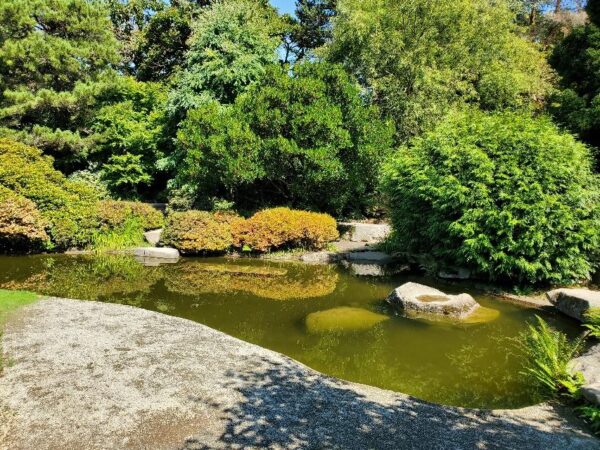

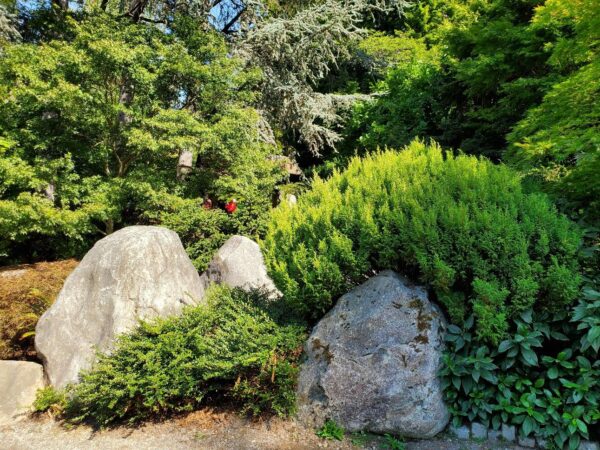
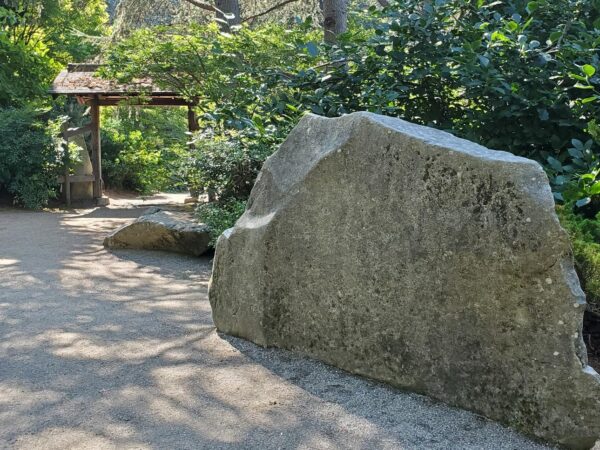
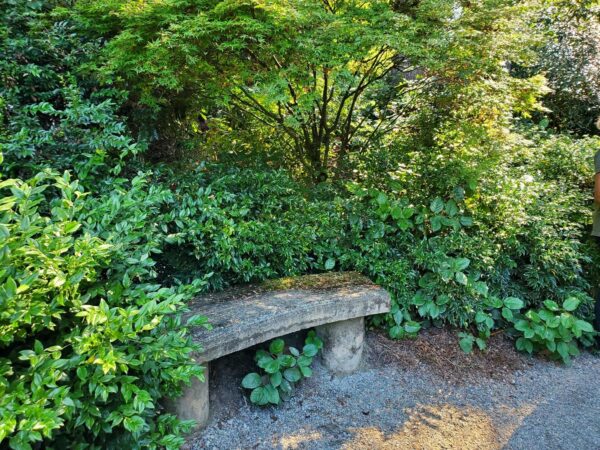
A stone bench provides a quiet place to sit along one of the lower garden paths.
Another aspect of Japanese garden design that Kubota used well is the placement of trees. He also loved the particular color of blue that several evergreen species possess. According to Joy, Kubota is the one to give credit for introducing the use of blue evergreens into Pacific Northwest garden design. His use of them in his garden is inspiring!

This spruce is particularly prized by the garden and is one of the many trees that only a gardener skilled in the ways of pruning in the Japanese style will be allowed to prune.
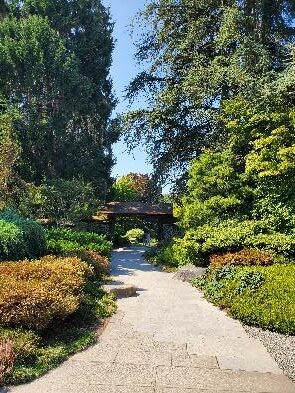
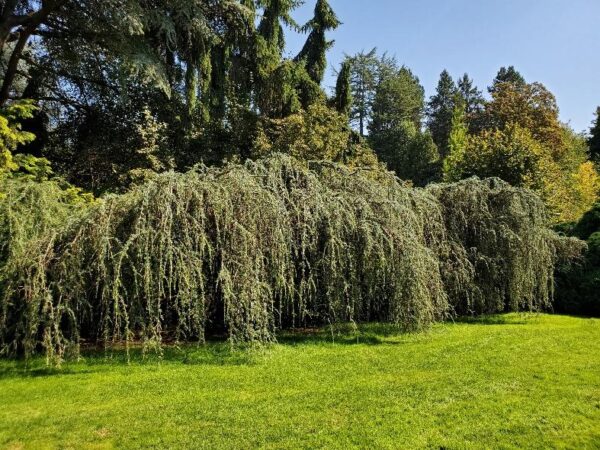
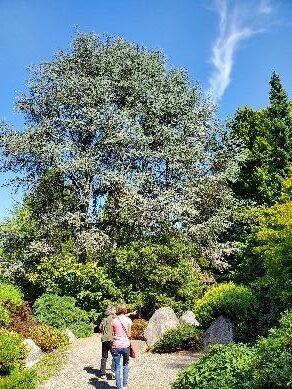
There is a large atlas cedar at the entry gate and a weeping atlas cedar placed along an open area of the garden. A well-placed group of atlas cedar draws you up a pathway.
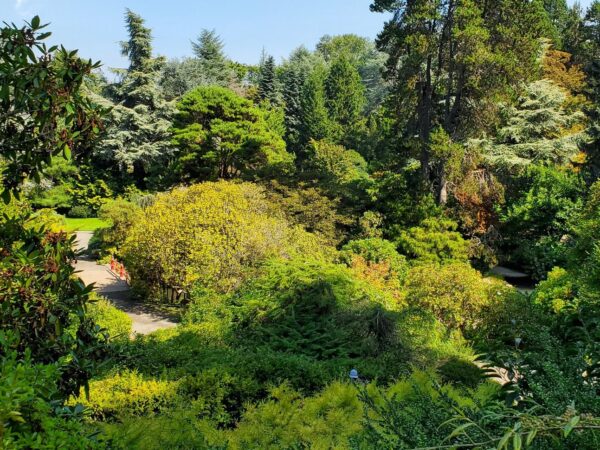
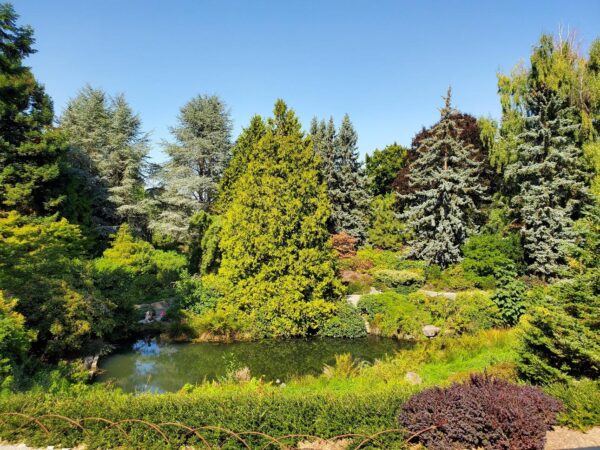
The use of blue from different evergreen species in the larger garden is inspiring! The use of different species of trees, from evergreen to the many beautiful Japanese maples can only make you stop and appreciate the dancing forms as you move through the garden. A quote on the garden’s website on one aspect of how Mr. Kubota approached the use of trees, made me laugh a little. It stated, “He was a visionary—he could imagine things in the future. He knew how plants look in different seasons, so it’ll be interesting all year. He would always have a focal tree, and all the rest are filler. He used to say it’s like a beauty pageant—if there’s one really pretty girl and the rest are kind of plain, then she’s going to really stand out.”
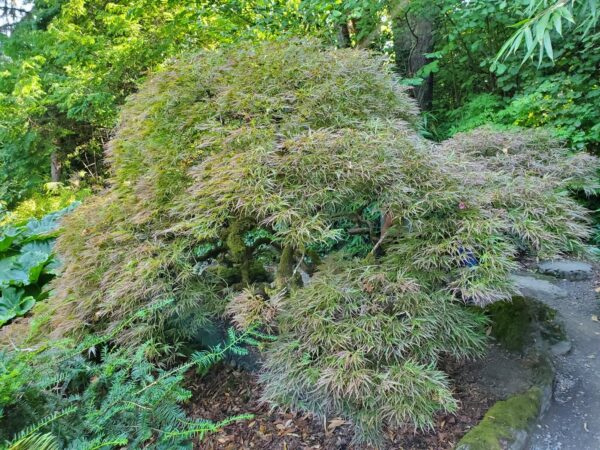
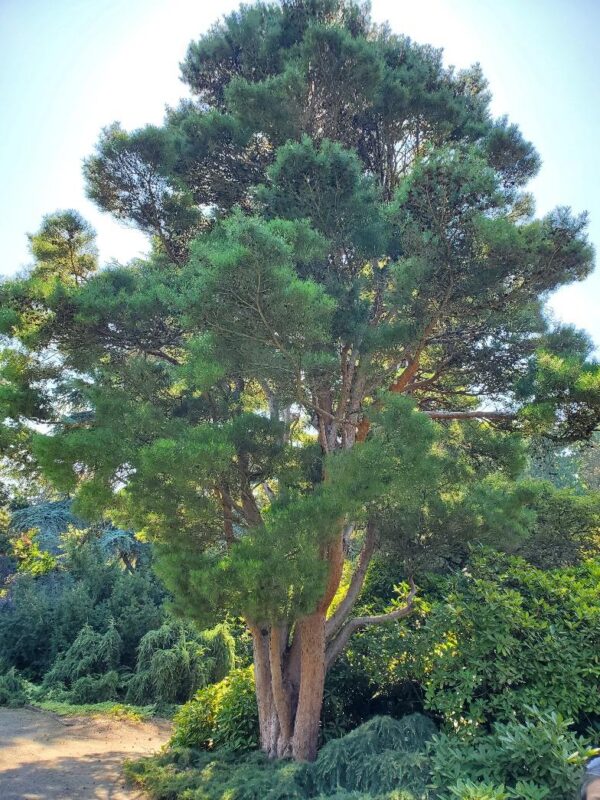
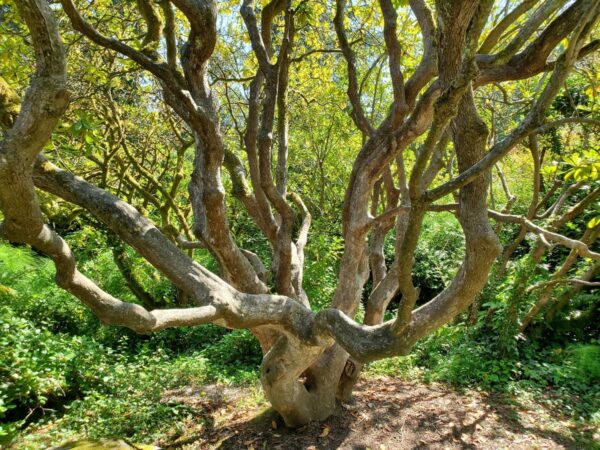

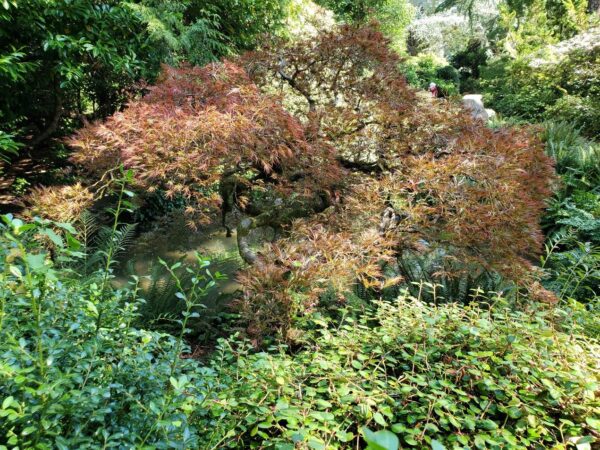
One last aspect of the garden is the fact that he also used the site as a nursery. Several areas that I found the most interesting were the mass planting of trees that Mr. Kubota planned to use for future design projects at other sites. As the trees grew up tightly together, they formed small forests that delight the senses in surprising ways.
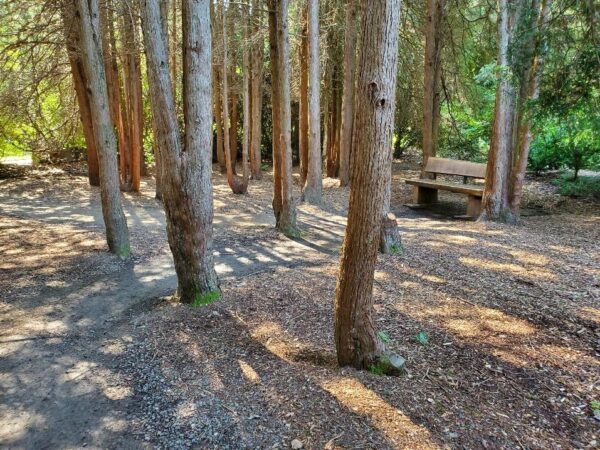
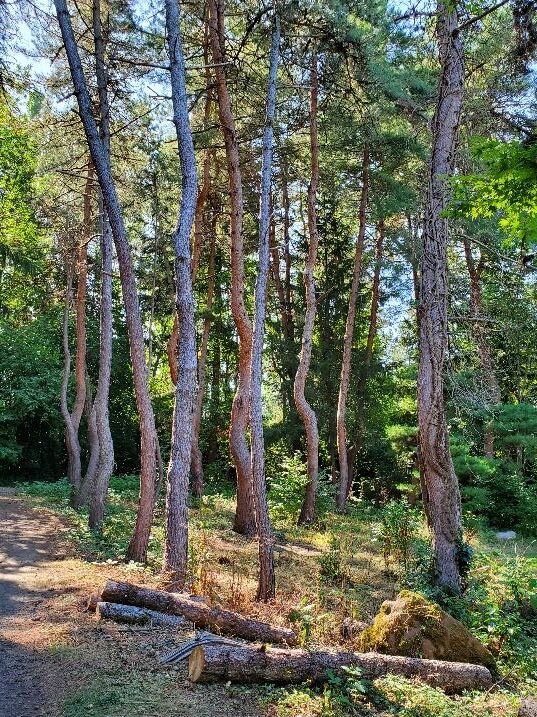
Dancing trees near the top of the mountain and bench sitting quietly in a lower grove.
Lastly, the garden, like most things in nature, is ever-changing. The hardworking employees and volunteers who keep the garden well maintained are continually working in the different garden rooms as needed to keep Kubota’s vision alive and flourishing. An example of this is the stone wall built by Japanese stone masons who were invited to the garden to demonstrate their art. An incredibly beautiful wall with a pavilion for gardening demonstrations, and summertime music was the happy result.
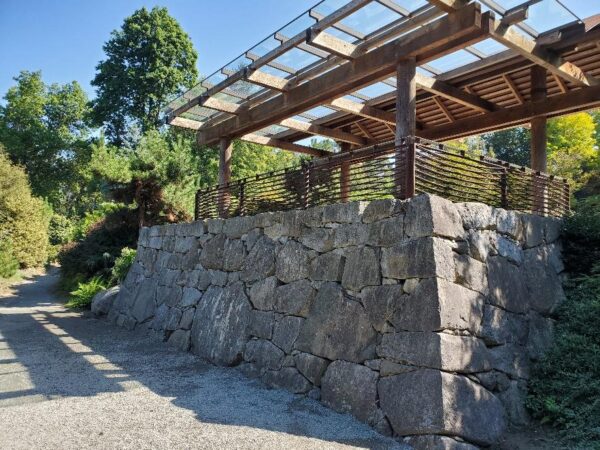
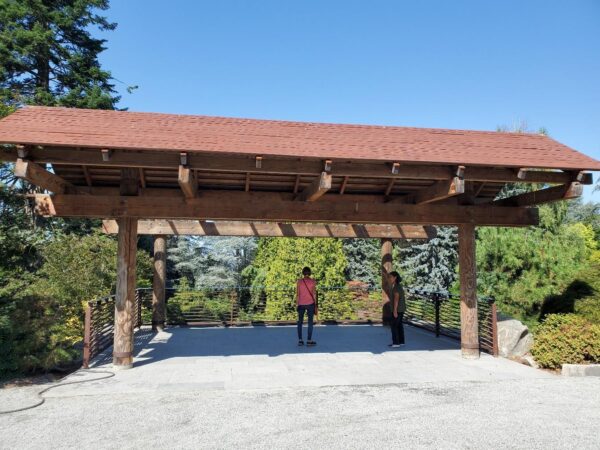
In 1973, Fujitaro Kubota was awarded The Fifth Class Order of the Sacred Treasure, by Japan, for “achievement in his adopted country, for introducing and building respect for Japanese Gardening and culture here.”
Kubota Garden was one of the most beautiful gardens I have had the pleasure of visiting. I would highly recommend taking a tour, rather than just visiting, as by doing so, you also are invited into Fujitaro Kubota’s history as well as coming to a deeper understanding of his vision for the garden. This is a garden that is worth visiting again and again, in every season, and every time of day. I will end with a quote from Charles Johnson (a National Book Award winner) found in the foreword to Spirited Stone, Lessons from Kubota’s Garden:
So, this is a poetic landscape for refuge and meditation, a work of art we could walk within that awakened in us a feeling of serenity, humility, and gratitude. A place that beckoned us to forget all our quotidian cares as city dwellers, to slow down the hectic pace of modern life and listen quietly and viscerally with our spirit and flesh… Words are merely “a finger pointing at the moon,” and cannot be a substitute for experiencing firsthand all that the Garden offers.
Go there.
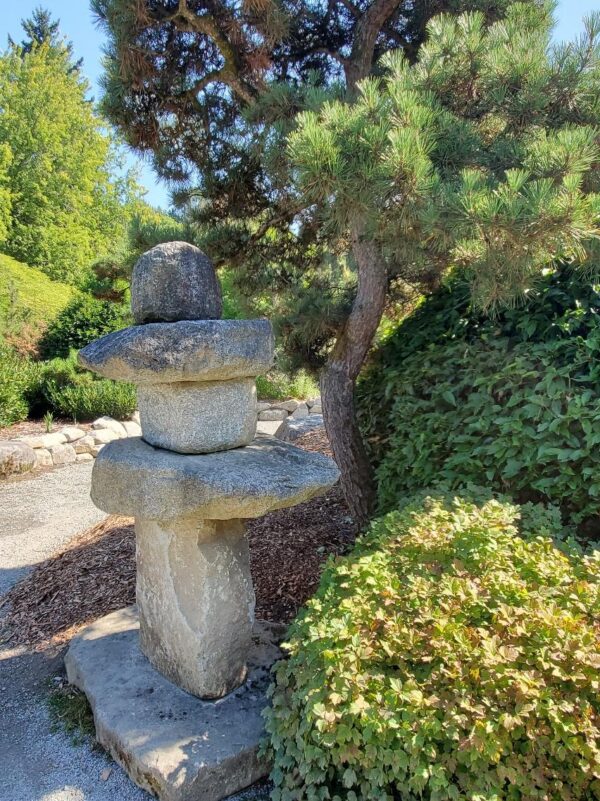
Additional Information:
- Kubota Garden is located at 9817 55th Avenue S, Seattle, WA
- The Garden is operated by the Seattle Parks and Recreation Department.
- Entry is free, but donations to help support the garden are very welcome.
- There are many demonstrations and exhibits throughout the year for all ages and gardening levels.
- For more information on tours, events, and volunteer opportunities go to the garden’s website: www.kubotagarden.org
- All photos, except the one of Mr. Kubota, were taken by Debra Dill.
- The photo of Mr. Kubota was found on this link: https://kubotagarden.org/resources.html
Debra Dill is an ISA Certified Arborist and has worked in the Horticulture field for 29 years.
She has been employed by the Edmonds Parks Department for the last 17 years and is the City’s field arborist.
